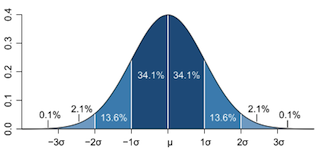Perception & technology TOK postcard
Smaller than you can see?
Guiding question
How has the use of the technology of microscopy advanced our knowledge of the natural world?
The first magnifying devices from ancient times were hemispheres of glass or glass balls filled with water that made written letters appear larger. It was not until the 1500's that lenses were first made. Robert Hooke first saw cells in 1665 with a microscope that had a magnification of about 50x. In 1683, Anton van Leewenhoek's microscope which allowed him to first see living cells and bacteria could magnify objects over 100x. The next 200 years saw small improvements on the magnification of images but the clarity of images improved as better lenses were made. Oil immersion lenses allowed for up to 1000x and this was the limit for the light microscopes that were in use in the late 1800's. With the 20th century, the discoveries of the electron and its smaller wavelength gave rise to the first electron microscope in 1931 that could magnify objects 400x but the resolution far exceeded that of the light microscope. Since the commerical production of electron microscopes began in 1939, the magnification has increase to 10 million times.
So how can this historical development be of any use? The advent of one technology has supported the developement of newer techniques to view every smaller items. The cellular level of life gave way to the organelle level of subcellular organisation in the era of the light microscopes. The electron microscope allowed the study of the smaller organelles, the properties of membranes and the macromolecules to flourish. By viewing the physical structure of the parts of living things, scientists can hypothesise the function of the parts in more and more precies ways.
X ray crystallography developed in the early 1900's and led to the determination of crystaline structures of many molecular structures including of course DNA and proteins. This technology fostered much of the understanding of the function of these materials.
Reflective questions
What is the limit of technology in science?
How can we be certain that the techniques to prepare specimens to be viewed with technology do not change the actual specimen we are investigating?
Examples from Biology
Various types of microscopy exist now. Not just simple light microscopy but phase contrast, back field lighting, polarised light provide different views for distinguishing various aspects of tissues and structures.
Transmission, scanning electron microscopy are the best known types but several others also exist. The scanning tunneling microscope allows the surfaces of atoms to be distinguished.
Perspectives
Think back to the first time you used a microscope and what did you think about seeing these "invisible" things? Most students get really excited about the distinctive air bubbles rather than the vague and out of focus cells they are suppose to view!

 IB Docs (2) Team
IB Docs (2) Team

